It's been a lot of work but the modified Casio MG-510 guitar is now reborn as The Casiocaster. I added a set of Fender tuners and a Fender tremolo unit, both far better than the slightly cheap hardware fitted as standard. A huge amount of work but it's all paid off in the end. The noiseless DiMarzio pickups are a vast improvement on the iron-loaded HSS pickups it came with and the ability to drive the BOSS SY-1000 synth directly makes this a pretty incredible guitar.

Would I recommend doing this to a guitar? Not unless you can fins a cheap Casio like I did. Fitting a Roland GK kit is quite an undertaking even in a guitar with cavities already routed out like in the Casiocaster and a nightmare in a standard Stratocaster. Trust me, I've done this on a Fender Stratocaster in the past and it's not something I would want to do again. Just buy an MG-510 and a router, get a custom pickguard made and while I wouldn't call it straightforward it's a lot easier than digging into a Fender guitar. And forget it entirely on anything that isn't vaguely Strat-shaped.
Video to follow!
Caution: contains major spoilers for anyone who hasn't seen Chapter 1.
With a bit of careful drilling and filing and a tiny bit of routing the Roland GK pickup is bolted in place and the MG510 is starting to look pretty mean.
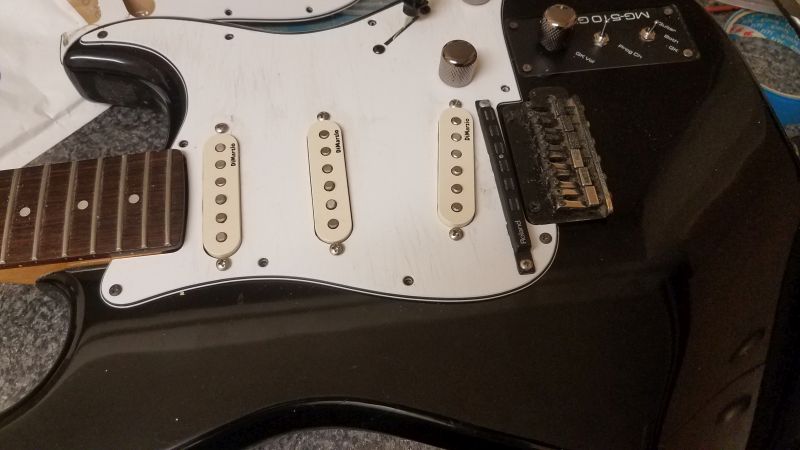
Now it's electronics time. Installing the GK control board and wiring all the controls can be a tricky operation with much potential for stripping wires too short or pulling them out of the multi-pin headers. Proceed with caution.
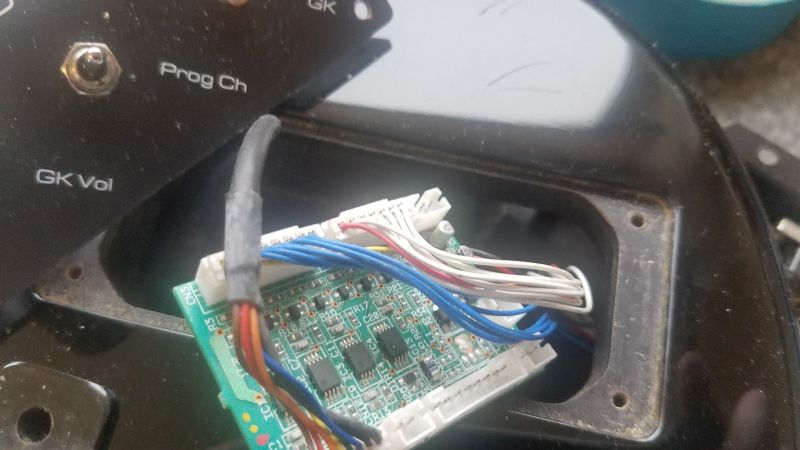
The great thing about the Casio guitar is the amount of space they routed out for all the MIDI converter circuitry leaving plenty of room for the tiny GK board. Fitting this into a standard Stratocaster is next to impossible without routing chunks of wood away but this is an absolute breeze.
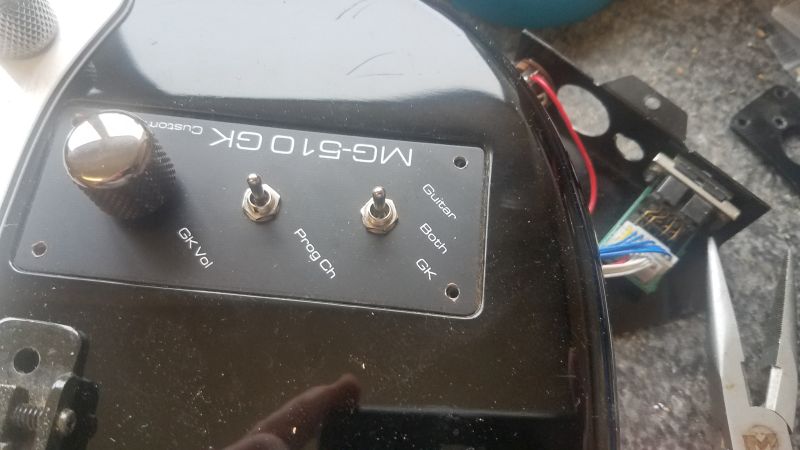
To make life even easier, the GK output jack fits absolutely perfectly into the hole in the jack plate where the MIDI output used to be. Unfortunately there are some redundant openings that may or may not get a blanking plate some time in the future.
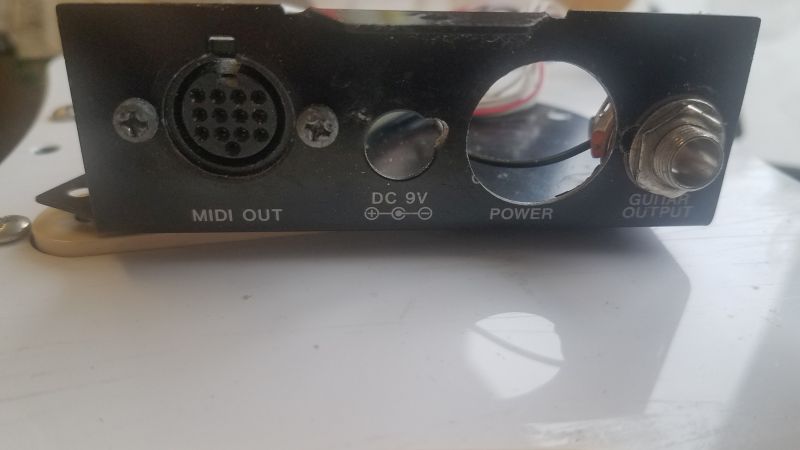
In this operation it is absolutely vital to refer to the GK-Kit installation guide and its Japlish advice on how to wire the "buttery" in an active guitar.
GK-KIT-GT3_OM.pdf (683.34 kb)
To be continued ...
The time has come to do drastic surgery on the non-functioning Casio MIDI guitar. While the 1990s output of the Fuji-Gen Gakki factory has superb build quality, I've never been a fan of the Japanese pickups. I happen to have a nice set of DiMarzio noiseless single coils that would suit this guitar very nicely and a Roland GK kit so let's get to work ripping out the old electronics ...

The MIDI control panel isn't entirely suited to the GK controls so I've rattled off a PCB design with a GK volume control, momentary up/down program change switch and a GK/guitar/both selector.

Custom pickguard by local builder Tiny Tone is a hybrid of the old Casio version and a US Stratocaster with three single coils instead of the Casio HSS layout. The MIDI pickup isn't compatible with the GK board so the bridge cutout is Stratocaster style.

I've installed a four-pole double wafer switch as I want this guitar to have my special custom switching.
Super Strat Wiring.png (opens in new window)
So that's all the best Stratocaster sounds plus the Telecaster inbetween sound. The noiseless pickups should be perfect for this as there's no problem with not having RWRP in some combinations.

Next job will be drilling the pickguard for the GK pickup.

I've routed a lot of wood away around the bridge and I'll be using a pickguard from another project as a drilling template. This is an after market pickguard for a Fender Roland Ready Stratocaster and the GK pickup holes line up exactly with the Roland unit.

Don't miss the thrilling Chapter 2
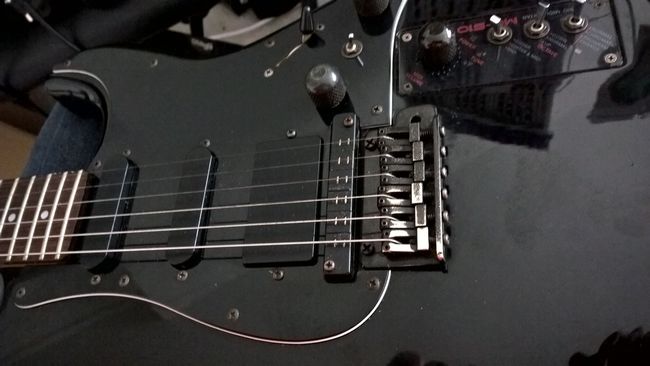
Yes, it's another new (old) guitar. This one has been a "Holy Grail" guitar for me for a long time. I used one back in the 1990s in a studio in Newcastle and I always remembered it being a great guitar. Turns out they were built for Casio in the Japanese Fuji-gen Gakki plant that made the Japanese Fenders of the 1980s and the neck contour is exactly the same as my E-series MIJ Stratocaster.
Unfortunately, someone's done amateur repairs to this and soldered it up with jam and a hot spoon so the MIDI circuit is dead as a doornail and not coming back. No matter, I may even retrofit a Roland GK kit into this and have the world's coolest 90s tech guitar.

UPDATE: Currently undergoing conversion to a Roland GK system